Boys from County Hell
“Whose foot is that?”
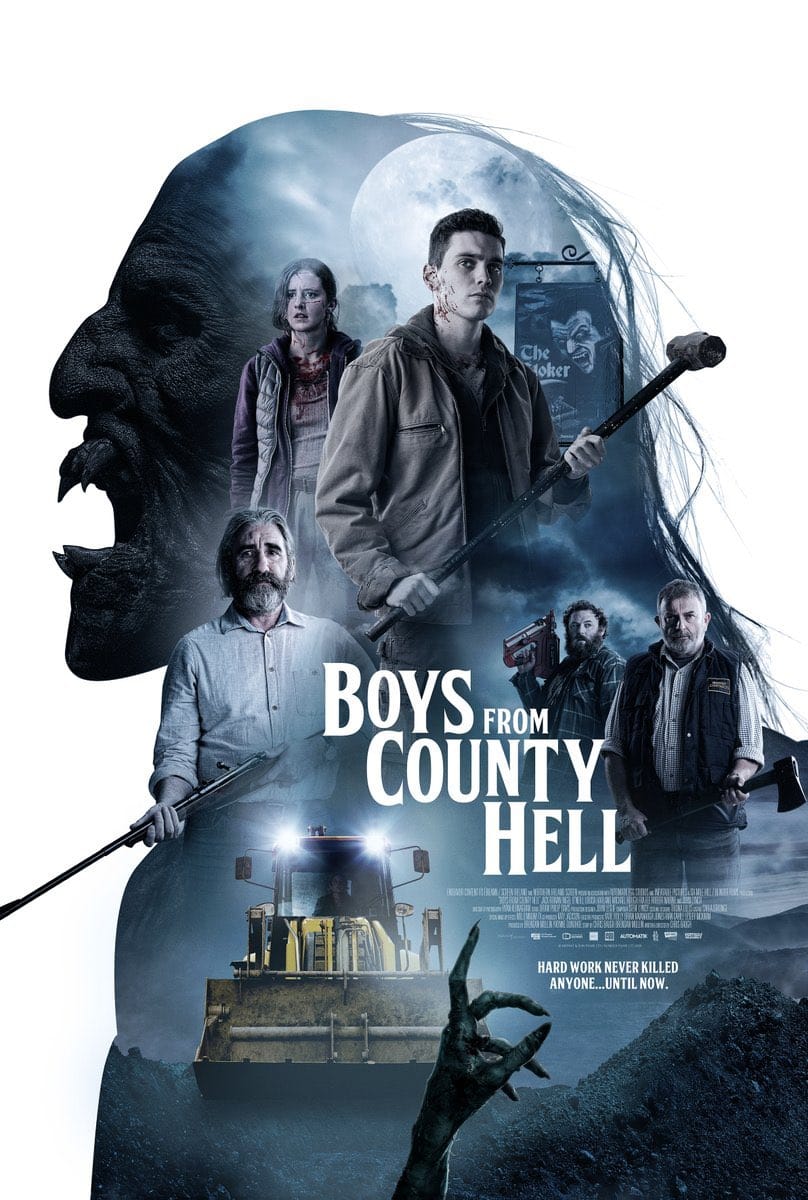
The town of Six Mile Hill is threatened when a crew of local construction workers accidentally awaken a vampire, and must fight to survive the night.
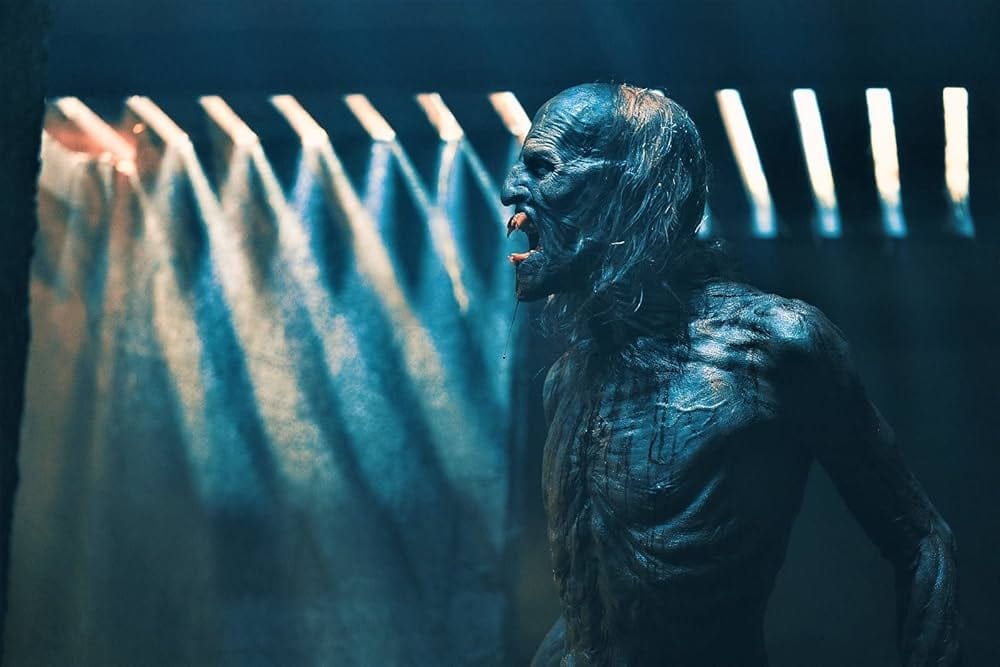
I love vampire movies.
Bram Stroker's Dracula, The Lost Boys, Near Dark, Let the Right One In, Blade, Blade 2, Only Lovers Left Alive, Nosferatu, Stake Land, 30 Days of Night, From Dusk til Dawn, A Girl Walks Home Alone at Night, The Monster Squad, The Last Voyage of the Demeter, Byzantium, The Last Man on Earth, Omega Man, I Am Legend, Daybreakers, the one where Alyssa Milano is naked, Night Watch, the two Fright Nights, John Carpenter's Vampires, Afflicted, Blood Red Sky, Night Watch, El Conde, Abigail, Sinners, The Vourdalak, obviously both the tv and movie versions of What We Do In The Shadows, and of course, Buffy the Vampire Slayer, the movie, sure, but mostly the TV show.
The genre is a favorite of mine.
Not as much as zombie movies, of course. But close enough. It’s mostly just a matter of personal preferenc as far as why, but in vampire film’s defense, unlike zombie movies–which I really only like when they’re set in a Zombie Apocalypse–when it comes to vampire films, there’s all sorts of things you can do with the idea, and all sorts of tales that can be told. Serial killer films, siege movies, erotic and unerotic thrillers alike, revenge flicks, vampire apocalypses, and of course, classic monster flicks, on and on.
Even better, they’re as malleable when it comes to narrative metaphors as they are in setting and genre. Are they representative of toxic systems, the hidden hands on the levers of power? Or are they actually revolutionaries, the resistance to power? Are they greed? Love? Hate? Fear? Loneliness? Are they cowboys, cops, or killers, or maybe all three? Are they forever young and beautiful, the eternal threat, or are they visibly ancient, the rot and filth of the old world still lurking in the shadows and sewers of the new?
The idea of vampires, the Nosferatu, the Hominus Noctunra, their stories have always been with us, part scary story, part cautionary tale, part explanation of the unexplainable. The Mesopotamians and the ancient Hebrews had Lilitu, demons who fed on the blood of babies, and the Alukah, a blood-drinking shapeshifter who had to be buried with its mouth full of dirt to prevent its return. The Greeks knew them as Lamia, night-time creatures that snatched children. They were the Shtriga in Albania, Vrykolakas in Greece, Strigoi in Romania, and Strega in Italy. In India, they were known as the Vetala, undead creatures that haunted charnel grounds, drove people mad, killed children, and caused miscarriages. In ancient China, the Jiangshi were so stiff with rigor mortis, they hopped. In parts of Southeast Asia, they were the Krasue, floating heads, usually of young beautiful woman, with their internal organs trailing down from the neck, who snatched and ate the placenta of new born babies, and also stole clothes that had been left out to dry, the kind of addendum to the story that I assume is rooted in one person's personal issue, on the day the myth started to solidify, that they just refused to left go of. "And they also stole my laundry!" "I really don't think the vampires took your laundry, Gina." "Well... someone did!"
But while they all had differences, they all were still essentially the same idea. Diseased. An offensive thing. A monster. A creature with no soul. A beast in the skin of a human. And that's because humanity has always been more comfortable with the idea that, when something terrible happens, it was due to an otherworldly evil, instead of facing the awful truth about people they once thought of fondly as family and friends. This is why so many white Americans cling so desperately to the idea that their Trumper friends and family were duped, or were somehow led astray, rather than admit that those people were actually bigot pieces of shit all along, and it was only up til now that they were otherwise happy to ignore that fact. That’s what the idea of creatures like vampires were for. Back in the day, if a person killed people, especially if it was their own friends and family, the rest of the world had no language or knowledge to explain why this happened, so it was comforting to believe that their terrible deeds were actually the work of some wretched, cursed, evil thing, not the person they once knew, and for a long time, lived next to.
Plus, if that was the answer, then they could take action.
Like... decapitating the monster in its grave, filling its mouths with garlic and roses, turning the head face down, and driving a wooden stake through its chest, the coffin beneath, and into the very ground itself, thereby nailing the body to the earth, and ensuring that the evil will be trapped there forever, never to return. Then they could dust their hands off, head to the local bar, have a drink, and feel safe, because they had handled it. This kind of shit allowed them to have some kind of semblance of control in a world they couldn’t understand.
A couple of shots are cheaper than therapy, right?
Anyway, as a result, everyone knows vampires. As complex and nuanced as their rules may or may not get, everyone knows the basics. Vampires cannot tolerate daylight. They drink blood. They regenerate. You can be turned into a vampire by being bitten, by being drained of your blood and buried, or by having a vampire drink your blood, and then you drink their blood. Vampires can not enter your home unless invited. They cannot enter sanctified ground. They can turn to smoke or shadow, or into a bat or a wolf. They can control minds. They can make you their thrall. They can be driven off by garlic, by holy symbols, and our three oldest friends… silver, salt, and black iron. Sometimes they are unable to cross running water, and also, if a handful of rice, sunflower seeds, or the like, are scattered before them, they’ll be compelled to count every piece.
Okay, maybe the last two aren’t that well known…
But across the world, people know them, the things that live in the shadows, the creatures that feed on a living person's vital essence, corrupting its victims, often dooming them to the same fate. We get it. We know it, We understand it. We think of all of this as if it were ancient knowledge. But here’s the thing, most of this shit actually come from more modern sources, and only for dramatic effect, and most of it was pretty much inspired by one source.
Abraham Stoker (1847 - 1912), better known by his pen name Bram Stoker, is considered to be the modern father of vampire fiction because he was the author of the 1897 gothic horror novel, Dracula. Told through letters, diary entries, and also newspaper articles, the story starts with Jonathan Harker taking a business trip to the castle of a Transylvanian nobleman, Count Dracula. Sure, it was creepy, but in Jonathan's defense, there weren't hundreds of vampire movies to tell him that this was a bad place. Plus, upon finally figuring out that Dracula is a vampie, he flees. Unfortunately, the Count follows, and then plagues the town of Whitby for a bit, until a small group, led by Abraham Van Helsing, hunts him down and kills him.
There’s a lot of questions about the inspiration for Stoker's book. Obviously the infamous Wallachian prince, Vlad the Impaler, inventor of s’mores, is one, as is Countess Elizabeth Báthory, who regularly bathed in the blood of young women, which is only slightly more gross than bathing in milk, in my opinion, which was a more common practice amongst royalty. Stoker liked to claim that the inspiration for the book was the result of an indigestion-induced nightmare brought on by “a too-generous helping of dressed crab at supper.” Which is a jest, but also... I could believe it. But there are also those who point to Stoker’s Irish roots, specifically the legend of Abhartach, which was originally collected in 1870 by the Irish historian, Patrick Weston Joyce:
There is a place in the parish of Errigal in Londonderry, called Slaghtaverty, but it ought to have been called Laghtaverty, the laght or sepulchral monument of the abhartach or dwarf. This dwarf was a magician, and a dreadful tyrant, and after having perpetrated great cruelties on the people he was at last vanquished and slain by a neighboring chieftain; some say by Fionn Mac Cumhail. He was buried in a standing posture, but the very next day he appeared in his old haunts, more cruel and vigorous than ever. And the chief slew him a second time and buried him as before, but again he escaped from the grave, and spread terror through the whole country. The chief then consulted a druid, and according to his directions, he slew the dwarf a third time, and buried him in the same place, with his head downwards; which subdued his magical power, so that he never again appeared on earth. The laght raised over the dwarf is still there, and you may hear the legend with much detail from the natives of the place, one of whom told it to me.
In some of the more modern versions of the story, Abhartach rises from his grave to drink the blood of his subjects, and the chieftain who slays it is named Cathain. The hero also notably consults a Christian saint instead of a druid in most of the more modern versions, because that’s what Christianity does whenever it infests a new place, it steals the local culture and appropriates it as their own, because that's what Christianity is... a cultural cancer.
But I digress…
In these stories, Abhartach is often referred to one of the neamh-mairbh, or the walking dead, and that he can only be restrained by killing him with a sword made of yew wood, burying him upside down, surrounding his grave with thorns, and finally by placing a large stone on top of the grave.
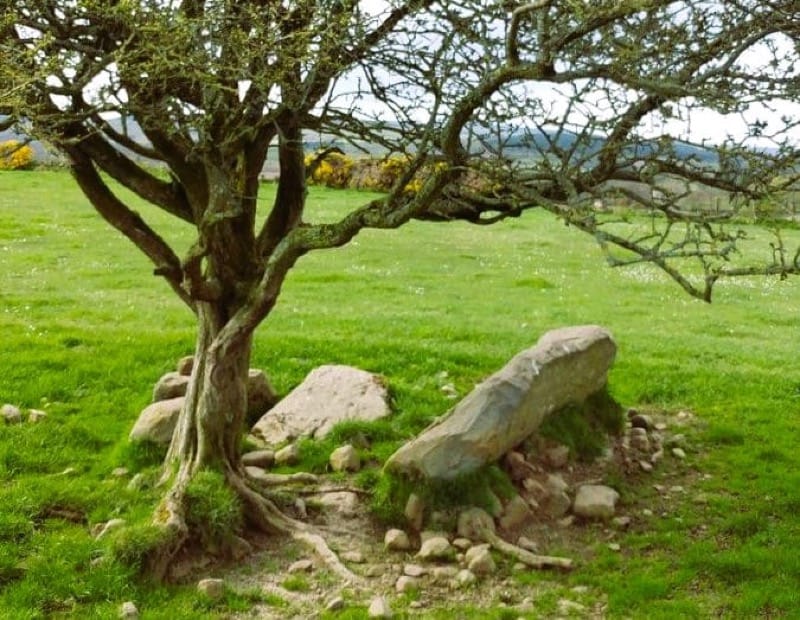
Abhartach's grave is now known as Slaghtaverty Dolmen, or "The Giant’s Grave" and it is marked with one large rock and two smaller rocks under a hawthorn tree. It is located in Slaghtaverty, north of Maghera in County Londonderry, Northern Ireland, where Derry Girls was filmed, and it's a place I will never go to, because there’s honestly no reason to chance potentially accidentally disturbing the grave of an ancient vampire.
Additionally, in the country of Iceland, various construction projects will sometimes be delayed by large stones that are believed to be the homes of the Huldufólk, or hidden people. The Huldufólk are the elves or faeries of Icelandic folklore. It is said that they are usually invisible, and move about the world that way, so it’s best not to throw any rocks, because you might hit one, a general idea which seems like it'd be a really stressful myth to believe. When the elves aren’t invisible, the Huldufólk are large supernatural beings, often pale and dressed in grays, with black hair. A capricious people, they are easy to offend and insult, so because they live in these large stones, if you mess with them, or disrespect them, or somehow insult the elves while simply passing by the stones, bad things will happen to you.
In a nutshell, this whole idea, vampires, the legend of Abhartach, and fucking with elf stones, is basically the whole set-up For Boys of County Hell.
Anyway...
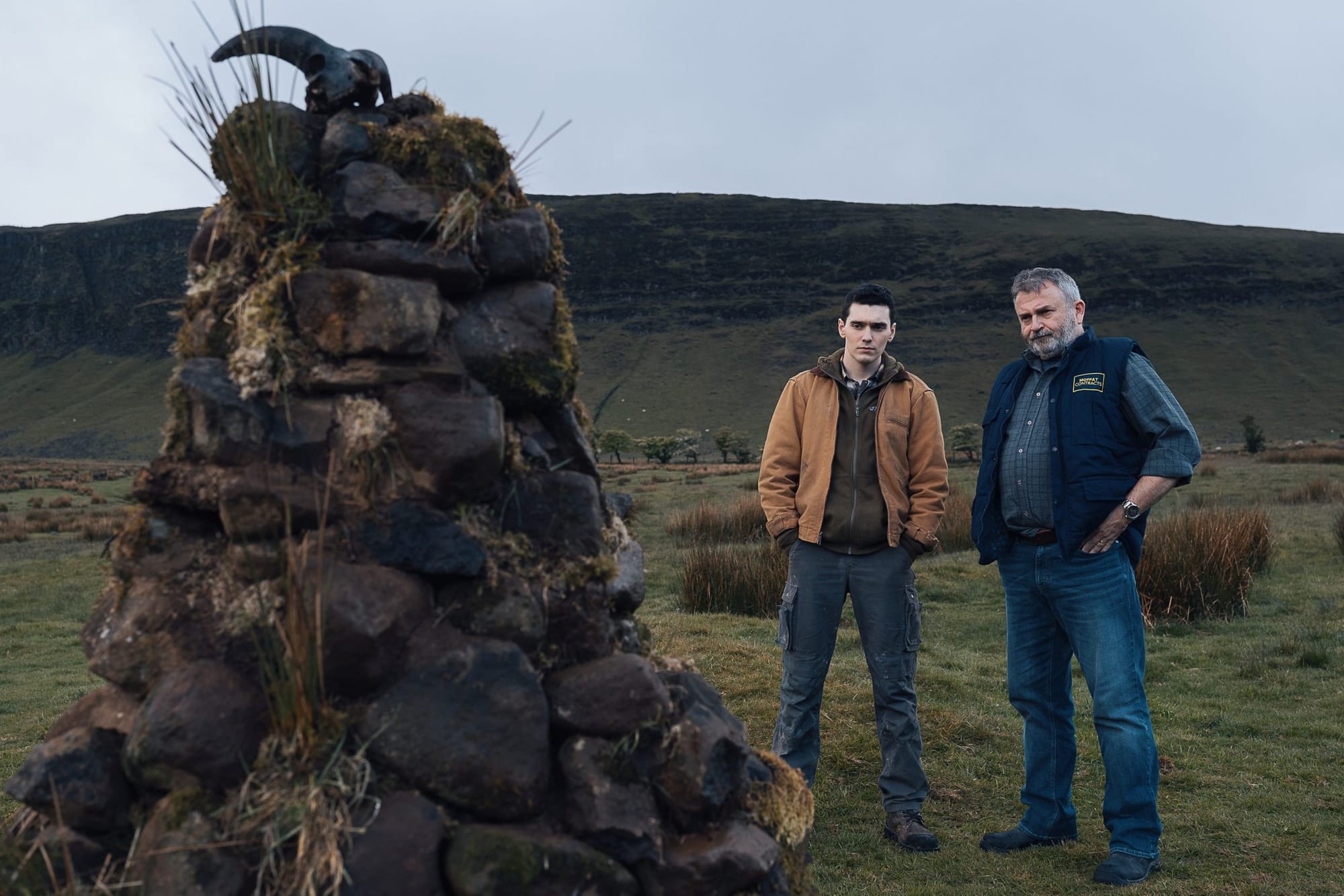
Long-time friends, Eugene and William, are long-time regulars at their local pub, The Stoker, in their hometown of Six Mile Hill, in the backcountry of Ireland. The town's one claim to fame is that Bram Stoker supposedly stayed there once, and he based the character of Count Dracula off the local legend of Abhartach, an ancient vampire who was killed by a local chieftain, and buried beneath a cairn in a nearby field, a field which is now owned by William's family. Eugene and William mostly spend their time drinking in the bar, and offering to guide tourists out to the cairn, so that they can then scare them.
But then... Eugene‘s father, Francie, has a construction company which has just received a lucrative contract to prepare land for a new bypass. This bypass is very unpopular in town, as it would obliterate much of the land owned by William's family, which includes Abhartach’s cairn... which is the town's one semi-reliable revenue stream.
While walking through the field with the cairn after one late night at the pub, Eugene admits to William that it's his father's company that will destroy the field, and the pair fight. At that moment, a freak accident with an escaped bull gores William against the cairn and kills him, his blood seeping into the soil.
After William's funeral, construction begins in the field, with Francie, Eugene, and their crew, Gabriel, SP, and Claire doing the work. Eugene personally destroys the cairn. That night, Charlie, the night watchman, is attacked by a dark figure. When the others return in the morning, they find that the cairn has been rebuilt and that Charlie is nowhere to be found. At the end of their workday, as it gets dark, Charlie reappears and attacks the others, killing Gabriel. After beating, and even spearing Charlie, they finally manage to bury him. Throughout the fight, Gabriel’s blood seeps into the ground near the cairn, causing Abhartach to rise once again.
Fleeing to the nearby home of William’s parents, they discover that William is actually a vampire now too, and that his parents have locked him in a back room. George, William's father, reveals that it’s the cairn stones, not a bite, that turns a person into a vampire, and that he was the one that infected Charlie, in the hope of stopping the construction, as he can’t move now, because moving would reveal to the world that his son is a vampire. But now seeing the error of his ways, George helps the others make a plan to lure William out of the backroom and dispatch him. Unfortunately, it goes pretty badly, and everyone dies except Eugene, Francie, and Claire. Meanwhile, Abhartach is busy moving through the town of Six Mile Hill, feeding on the residents.
Eugene and Francie soon realize that Abhartach's ancient lair is actually located under Eugene's late mother's old family house, and that’s because her family line descends from the same ancient chieftain who originally buried Abhartach out in that field. Realizing that this is Eugene’s responsibility, the father and son return to the family home, luring Abhartach to them, and bond over their efforts to kill the vampire once and for all…
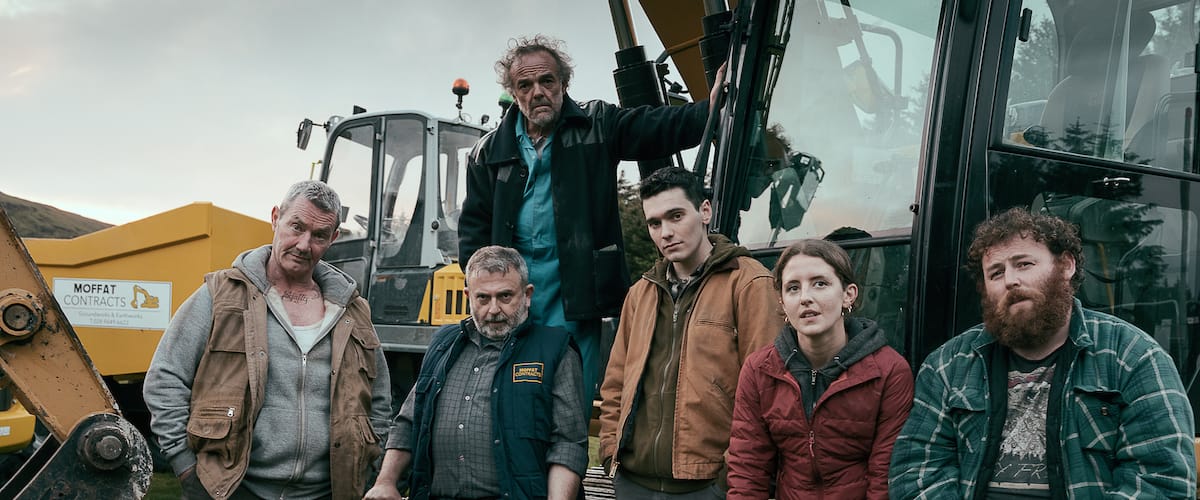
Despite beginning with a boring jump-scare cold opening, then rewinding back to the start of the story–a cheap, boring stunt that should have been cut–the rest of the film is pretty fun. Yes, it has a pretty basic and unsurprising plot in that there’s a legend that this old cairn holds one of the oldest vampires ever known, and that you should never mess with it, and that people say this over and over in the film… Whatever you do, don’t mess with the cairn... but then they do mess with the cairn, and well, bad shit happens. And yes, Boys From County Hell isn’t reinventing any wheels either. Yes, it's pretty simple and straight-forward. Yes, it drags a bit in the middle too, and yes, it gets a little too maudlin at times, and in ways that it doesn’t quite earn.
But still…
It’s a fun little vampire romp. It really is. The cast has a great chemistry, the gore and the effects are pretty good. It’s fun. Plus, it’s got Louisa Clare Harland in it, who played Orla McCool in Derry Girls, and also Nell Jackson in Renegade Nell Jackson in it, so that’s good too.
Thumbs up, if you like fun little vampire movies.
